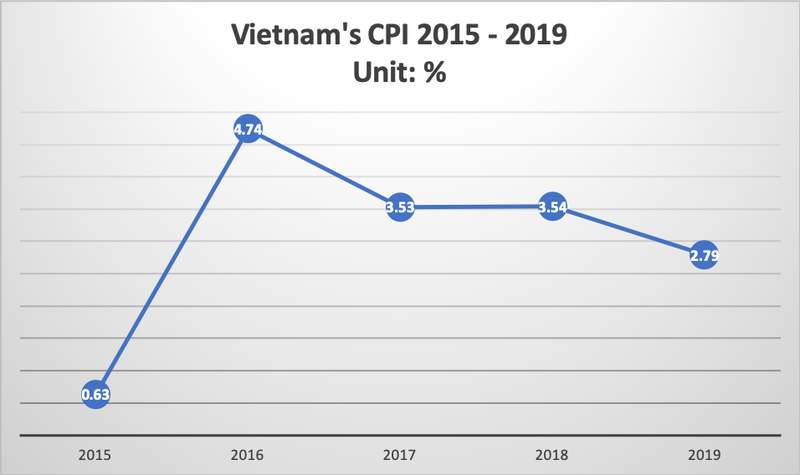Vietnam 2019 inflation hits 3-year low at 2.79%
The consumer price index (CPI) saw an increase of 1.4% in December against the previous month, the highest growth rate for December over the last nine years.
Vietnam's consumer price index (CPI), a gauge of inflation, expanded at 3-year low of 2.79% year-on-year in 2019, lower than the 4% target set by the National Assembly, according to the General Statistics Office (GSO).
| Data: GSO. Chart: Hai Yen. |
The CPI saw an increase of 1.4% in December against the previous month, the highest growth rate for December over the last nine years, and up 5.23% versus the end of 2018.
Ten out of 11 commodity groups, which are components of the basket for CPI calculation, witnessed month-on-month hikes in prices. Among them, food and catering services posted the sharpest increase of 3.42%.
Other groups that saw their prices increase were transportation (0.61%); housing, water and electricity supply, and construction materials (0.43%); education (0.01%); culture, entertainment, and tourism (0.09%); household equipment and appliances (0.14%); garment, footwear and hats (0.33%); beverages and cigarettes (0.25%); medicine and healthcare services (0.03%); other goods and services (0.24%).
The only group that saw its price down in December was post and telecommunications with 0.09%.
The main contributor to a high CPI growth in December was the African swine fever. As of December 19, nearly 6 million pigs were culled, equivalent to 340,800 tons of pork or 9% of Vietnam’s pig tally.
This resulted in total pork supply in 2019 of 3.3 million tons, down 13.8% year-on-year, causing pork prices to increase 19.7% in December against the previous month and adding 0.83 percentage points to overall CPI growth.
According to the GSO, core inflation in 2019 picked up 2.01% year-on-year, mainly due to surges in prices of food, health care services, education and petroleum products.
In a meeting on December 25, Deputy Prime Minister Vuong Dinh Hue said pressure from high pork prices may push the inflation to over 4% in the first quarter of 2020, but it is still feasible for Vietnam to keep the rate below the National Assembly’s 4% target for 2020, estimated to be in range of 3.59 – 3.91%.












